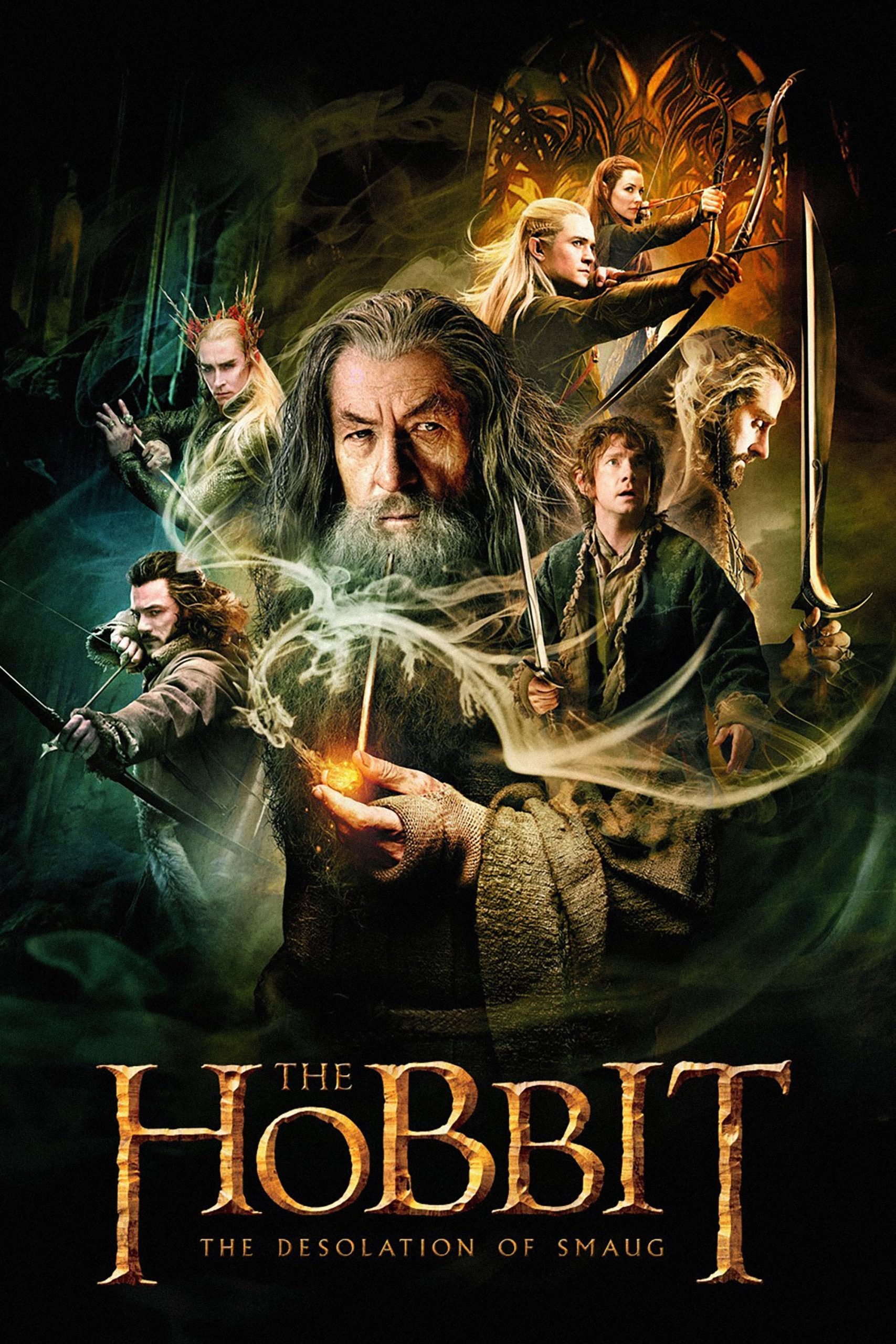
The Dwarves, Bilbo and Gandalf have successfully escaped the Misty Mountains, and Bilbo has gained the One Ring. They all continue their journey to get their gold back from the Dragon, Smaug.
06 Feb The Hobbit: The Desolation of Smaug (2013)
The Source of the Imagining
I read many criticisms of this. Apparently, there is a fundamentalist Tolkien fan club that rivals the Austen group in assailing anyone that deviates from the written word; by this I mean the last rewrite of Tolkien‘s
I never could finish any of the books. What enthusiasts claim as masterful world-making, I saw as a description of different types of beings with ordinary politics behind unexplained excuses for repetitive quests. So take this comment as one from someone looking for a good film experience rather than for allegiance to the books.
I think Peter Jackson is important in the world of film. Yes, not a showman or an exploiter. Not even particularly a storyteller but a film visionary.
Look at this and think about how the space is rendered. The dimensionality of it is striking, in places unique and generally it advances the state of epic cinematography.
When you make a work of art, you at least have to have a central organising mind to make the world and its presentation coherent. It is not sufficient to borrow the mind of the writer, who is basically a statistician of emotion. Instead, Jackson has given us his own spatial organisation, around which this is built. In fact, where Lucas built his own special effects company to render objects, Jackson has created his own, WETA, to render space.
we’ve known the influence of his introduction of dimension in the earlier films. By this I mean both the way depth is used in staging a scene and how the camera moves within that space. You can see a difference in the early films compared to what came before, and the very quick use of similar techniques in other big budget films. It is extraordinary. We are working on a project to annotate and track just such cinematic influence. Some of these non-Jackson films even used his WETA shop.
Here I think they advanced the art in three ways.
• Needless to say, we have sets with more vertical dimension and complexity than ever. The final set is amazing, with apparently infinite levels above ground, while simultaneous action is going on in apparently infinite levels underground. The camera seems effortless, but pay a little attention and see that new craft is used in the way the camera is placed and moves to allow us to comprehend where are, where we are going and what is flowing through.
• Creating a 3 dimensional movie is still bad business. The biggest challenge is that the stereoscopic projection handles movement with depth well only if it is horizontal. Vertical movement just seems jaggy, especially in comparison to the horizontal movement and most especially so when the movement is along the z-axis. The solution to this is to shoot the whole project at double speed. We don’t need the extra frames for the horizontal stuff around which cinema evolved. But we do for all the new dimensions WETA is mastering.
• Adding in vertical action scenes is likely harder than you would think. We have two here that qualify, meaning that they are not just action within a dimensional set, but that the causal dynamics of the action are interwoven with the dynamics of the space. So the battle with the dragon doesn‘t qualify. The fight with the spiders does, but I believe that uses the paradigm we saw in ‘King Kong’ I cannot check it but I think one of the falls through the trees was blocked quoting a fall by the ape. The new paradigm is the barrel fight; you know they have mastered this when they can insert humour that works.
I am okay with the inserted love story because it is so pure, archetypal in most ways. The only real problem I have with this visual thrill ride is the way the gold coins were handled. The basic idea is great: merge a complex threatening environment with the complex kinematics of a serpentine being. This is done by merging the flows of the coins with the flows of the dragon. Only WETA would have such an ambitious goal. You can see how they changed story elements around to have Smaug be gold coated toward the end of the sequence and have gold flow from scales. They obviously did not have time to have the gold slake off as flat elements. But long before that they compromised.
The way the scales on the dragon move through the sequence is precise, just as plates would. But the way the coins move as objects is not. Coins are disks and packings of coins will have internal alignments making feet shift randomly. The coins when they flow down slopes will combine tumbling with sliding as both sliding and lower locations are lower energies.
The point is that we can see that WETA wanted to do something advanced and clever here. But the costs would have been high and the funders didn‘t see the value. Shucks. Instead we get the coins and random objects rendered using ordinary particle physics — as if they were sand. This is the second major failure in this vein, since the original visionary of ‘Brave’ was fired over the rendering of snow as hair.
Posted in 2014
Ted’s Evaluation — 3 of 3: Worth watching.


No Comments